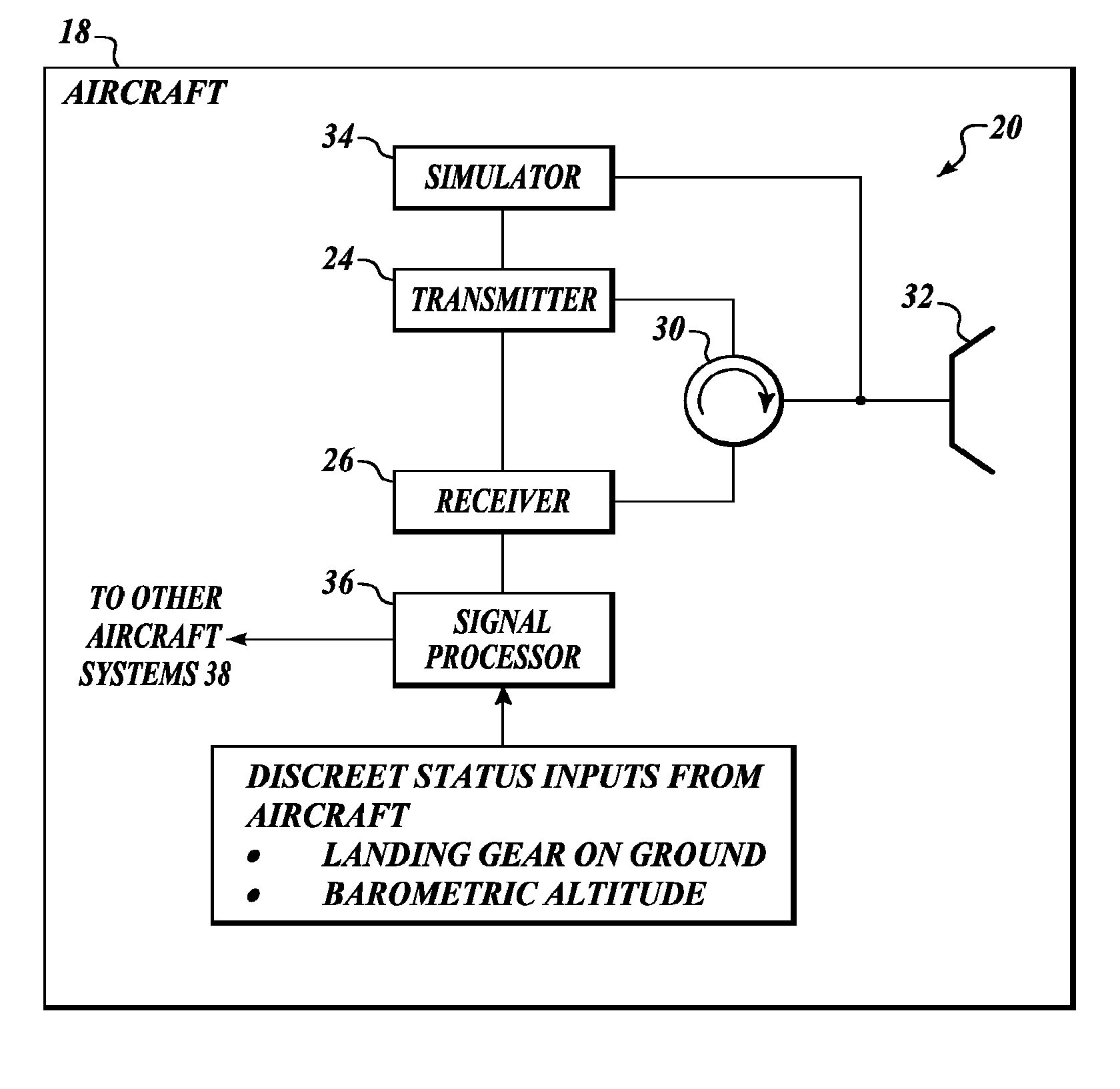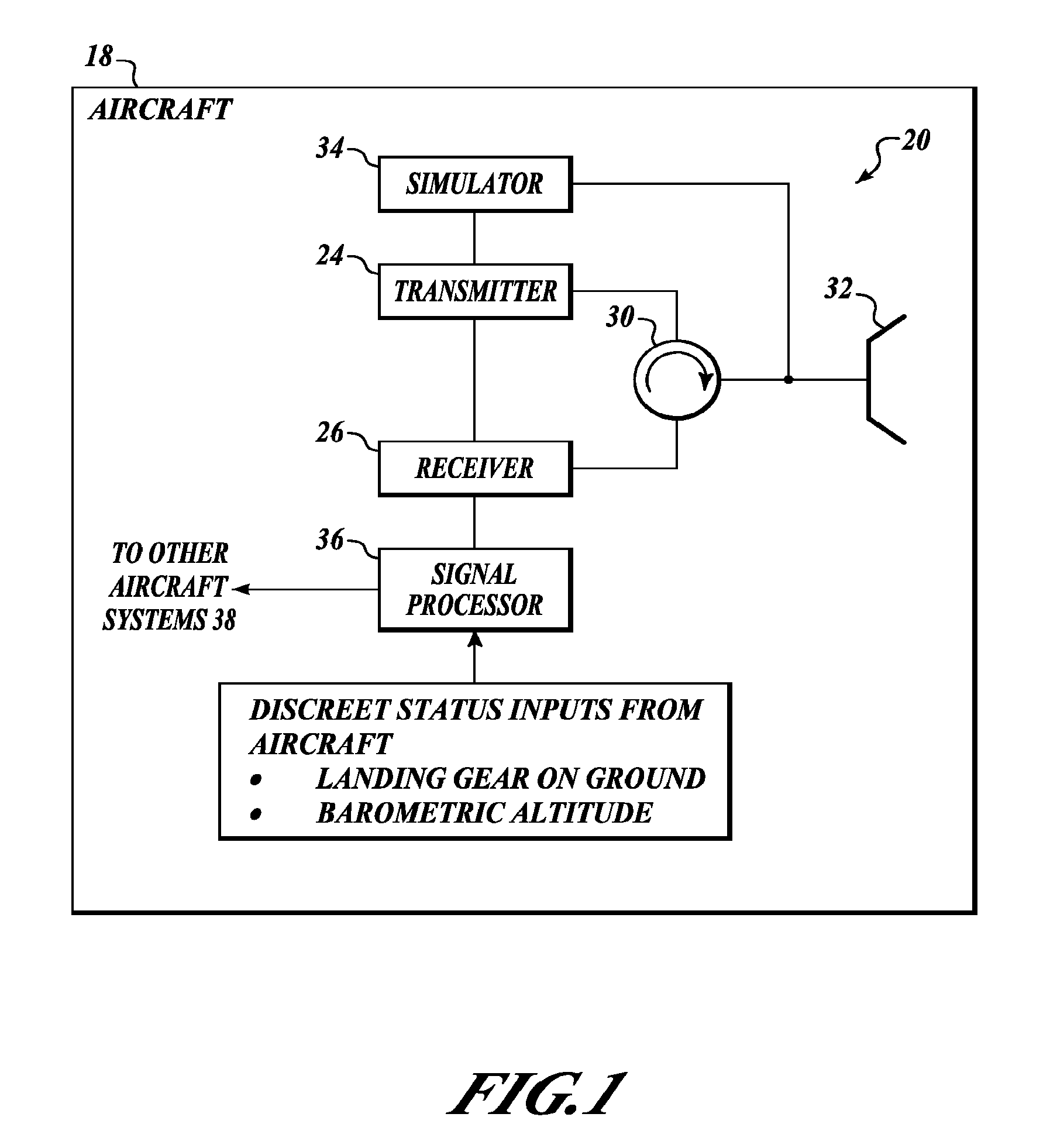Systems and methods for self-calibrating a radar altimeter
a radar altimeter and self-calibrating technology, applied in the field of systems and methods for self-calibrating radar altimeters, can solve the problems of inability to detect non-linearity in tuning, failure to allow detection of non-linearity in tuning, and relatively expensive components of the open-loop system such as the baw,
- Summary
- Abstract
- Description
- Claims
- Application Information
AI Technical Summary
Benefits of technology
Problems solved by technology
Method used
Image
Examples
Embodiment Construction
[0011]FIGS. 1 and 2 illustrate an example of a self-calibrating, radar altimeter 20 used in an aircraft 18 and formed in accordance with an embodiment of the present invention. The radar altimeter 20 includes a transmitter 24, a receiver 26, and a signal simulator 34. If the radar altimeter 20 is a single antenna radar altimeter, then the altimeter 20 includes a signal circulator 30 and a single antenna 32. Dual antenna radar systems may be used.
[0012] During normal operation of the radar altimeter 20, the transmitter 24 generates a radar signal that is radiated by the antenna 32. The antenna 32 then receives a delayed response of the transmitted signal and sends it to the receiver 26 via the circulator 30. The receiver 26 processes the delayed response signal and then delivers it to a signal processor 36 and then to other aircraft systems 38. This normal mode of operation occurs when the radar altimeter 20 is activated within a pre-defined distance above the ground. When the aircr...
PUM
 Login to View More
Login to View More Abstract
Description
Claims
Application Information
 Login to View More
Login to View More - R&D
- Intellectual Property
- Life Sciences
- Materials
- Tech Scout
- Unparalleled Data Quality
- Higher Quality Content
- 60% Fewer Hallucinations
Browse by: Latest US Patents, China's latest patents, Technical Efficacy Thesaurus, Application Domain, Technology Topic, Popular Technical Reports.
© 2025 PatSnap. All rights reserved.Legal|Privacy policy|Modern Slavery Act Transparency Statement|Sitemap|About US| Contact US: help@patsnap.com



